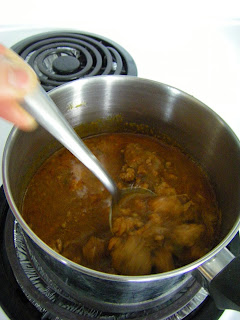 My girlfriend was watching Paula Deen the other day. This culinary queen of the southern United States was grilling...watch out, this is shocking....pizza! I thought this was a brilliant idea when my girlfriend related the preparation to me but found out, with a bit of online research, that grilled and flat-top pizzas have been kicking around for awhile. As far as I know though, there aren't many restaurants that are preparing their pizzas this way. They're sticking with the good old brick wood-fired ovens. Which is great. But I mean grilled pizza! You just can't beat that.
My girlfriend was watching Paula Deen the other day. This culinary queen of the southern United States was grilling...watch out, this is shocking....pizza! I thought this was a brilliant idea when my girlfriend related the preparation to me but found out, with a bit of online research, that grilled and flat-top pizzas have been kicking around for awhile. As far as I know though, there aren't many restaurants that are preparing their pizzas this way. They're sticking with the good old brick wood-fired ovens. Which is great. But I mean grilled pizza! You just can't beat that.Now my enthousiasm was very well founded. I prepared my pizza dough as per Jamie Oliver's basic bread recipe in his first ever cookbook The Naked Chef (another recent purchase). The thin parts of the dough were absolutely delicious, especially seeing as I'm not a very big fan of thick chewy American style pizzas. The trick, I believe, is in the half bread flour and half semolina preparation. No oil here. Just prepare the following ingredients as you would any other bread leaving only a bit of time for a second rise in the dough:
3/4oz active dry yeast
2 tbsp honey (or sugar)
a bit more than 2 cups tepid water (half for activating the yeast and half for incorporating into dry ingredients once the yeast mixture has been absorbed)
1 lb bread flour
1 lb durum semolina flour
2 tbsp salt
extra flour for dusting
To grill, I simply had the bbq on medium-high heat, slapped the stretched dough onto the grill (coated in a bit of olive oil), flipped when nice and golden (5 minutes or so), put my toppings onto the grilled side while the other side was grilling and that's it! For this particular recipe, I used the rest of my garlic scape pesto, halved cherry tomatoes, mild goat cheese, and anchovies in oil. And though the pizza was great, the best part is that I didn't even follow a recipe for the grilling part. A donkey could do this. Well, if not, a horse certainly could... But if you're not as skilled as a donkey or horse, you might want to take the pizza (raw side down) off the grill, put on your ingredients and then place back onto the grill. This would help you to not rush too much. I was lucky enough that it started raining will I was preparing this and so in my haste, half of the ingredients fell onto the pavement.
 With the left over dough that Mr. Oliver's recipe yeilded, I made focacia buns. They look like a belly with way too many inny belly buttons. Though this time I followed the recipe for the cooking, I didn't like the foccacia that much. They were kind of dense and chewy without any crust. Maybe it's my fault. But when the same dough is good when I don't follow a recipe and then not so good when I do follow a recipe, maybe I'm not the one to blame. Who knows?
With the left over dough that Mr. Oliver's recipe yeilded, I made focacia buns. They look like a belly with way too many inny belly buttons. Though this time I followed the recipe for the cooking, I didn't like the foccacia that much. They were kind of dense and chewy without any crust. Maybe it's my fault. But when the same dough is good when I don't follow a recipe and then not so good when I do follow a recipe, maybe I'm not the one to blame. Who knows?


















